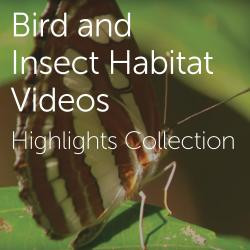Michelle Smith's collections
Highlights Collection: Bird and Insect Habitat Videos
<p>This is a Smithsonian Learning Lab topical collection, which may contain images, text, and other multimedia resources created to complement the Tween Tribune feature <a href="https://www.tweentribune.com/article/teen/project-rewild-europe-brings-safari-style-camp-portugal/" target="_blank"><em>A Project to “Rewild” Europe Brings a Safari-Style Camp to Portugal</em></a>. Use these resources to introduce or augment your study of this topic.<br></p>
<p><br></p>
 Michelle Smith
Michelle Smith
11
Reading Companion: Science of Hot-Air Balloons
This collection is a reading companion to the Cricket article "Hang on, Dolly!" [April 2016]. This article tells the story of Dolly Shepherd, an adventure-loving aerobat who parachuted from high-flying hot-air balloons in the early twentieth century. After learning about her story, explore the science of hot-air balloons with STEM in 30, a fast-paced webcast targeted towards students. Also includes lithographs depicting other female balloonists.
 Michelle Smith
Michelle Smith
5
Reading Companion: Pandas
This collection is a reading companion to two articles included here as PDFs - "A Symbol of Peace: The Giant Panda" [Faces; May 2007], "Something New at the Zoo" [Ask; July 2015], and "Panda Handstands Get High Marks" [Ask; March 2005].
Several videos feature panda behavior and habitat. The TED talk by a Smithsonian scientist raises questions about our love affair with pandas.
Together the resources offer several options for comparing and contrasting informational text with science content.
 Michelle Smith
Michelle Smith
17
"Story" Paintings
Teaching resource includes paintings that can be used as prompts for descriptive writing. Note the details first, then interpret them to create a narrative.
 Michelle Smith
Michelle Smith
8
Thanksgiving for English Teachers
A learning resource for students about Thanksgiving. The images in this collection are different portrayals of aspects of Thanksgiving from 1863 during the Civil War to the 1970s.
 Michelle Smith
Michelle Smith
12
How Do Real Historical Resources Help Us Understand Fictional Characters? To Kill a Mockingbird
<p>To explore this "essential question," the resources here offer different contexts for the novel To Kill a Mockingbird. They can help visualize and comprehend the setting of the book and the social issues of the Depression era in the South. With that understanding, students may better apprehend the choices and values of the characters in the novel. </p><p>Supporting question: "What was it like to live in small-town Alabama during that time?"</p><p>To Kill a Mockingbird is set in the ficticious Maycomb, Alabama, which author Harper Lee modeled on her hometown of Monroeville, Alabama. Students may approach the images from the time period and place of the story (1930s) to consider how race and social class make a difference in how one answers that question.</p><p>Supporting question: "What important matters were in the news during that time?"</p><p>It's not a fact that Harper Lee based the trial in the novel on the Scottsboro boys, but it may have influenced her. Have students look for similarities and differences. What other events were going on? (e.g., Great Depression).<br /></p><p>Have students explain how these resources help understand the characters in the novel.</p>
 Michelle Smith
Michelle Smith
14





